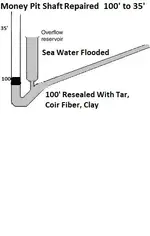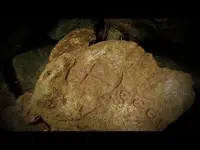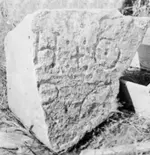Oh...Those Oak Island...Alchemist...Depositors!
When dealing with the Oak Island Alchemist Depositors...One should always...
Think Outside The Box!
Disclaimer...This is an Untested Hypothesis, based on Speculation from Stories and Theories expressed about Oak Island.
The views expressed are solely those of this writer.
The Oak Island Money Pit Shaft was built according to theories and flooded when three men having reached the 90 foot level, proceeded to rupture the Shaft's Water Seal with a crowbar.
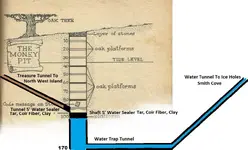
All activities to date to reverse the flooding was contrary to how the Depositors would have remedied the situation.
Rather than trying to
bail out the
water...The Depositors...would have
added water!
Finding out that in effect by bailing these Searchers were actually trying to drain the Atlantic Ocean.
Shown in a Test Tube
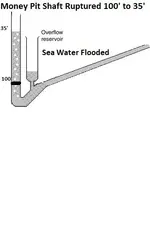
Sea Water has the higher density compared to Fresh Water.
1.030 Kg/1 to Fresh Water's 1.00 Kg/1
If the Depositors found that their Money Pit Shaft had been compromised and flooded, here's what I believe they would have done:
Items stated have all been claimed to have been used and found within the Oak Island Money Pit Shaft.
They would have dumped a formulated amount of Coir Fiber down the Shaft and waited until it had soaked up Sea Water and spread out in the Shaft.
Next, they would have dumped a formulated amount of liquid Tar on top of this and waited for it to start sinking.
Tar has a density of 1.02 kg/1 and it will sink.
Next, they would start to fill the Shaft with Fresh Water.
Fresh Water has a density of 1.00 Kg/1, adding Fresh Water to the Sea Water in the Shaft would
Dilute the Density of the water in the Shaft, thus lowering this temporary Patch down on top of the Rupture.
Once this Patch had settled on top of the Rupture...The Depositors would dump down on top of everything a formulated amount of Clay to Seal.
Bailing out the Water above the 90' level (which is now sealed), they then could ascend down to their Treasure Tunnel, opening its Seal and proceed to their Treasure.
